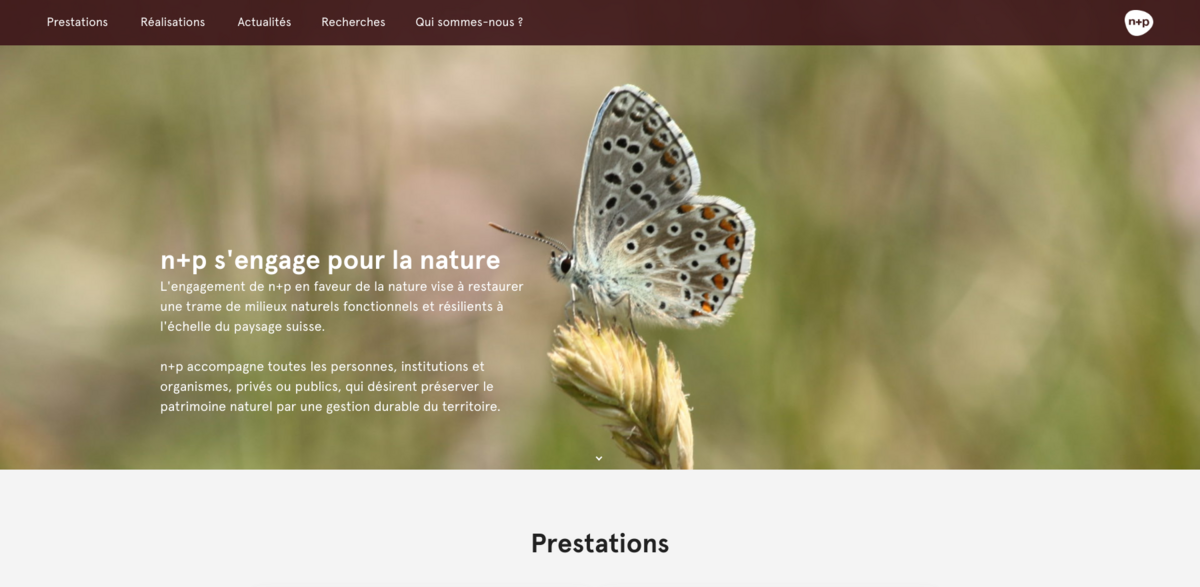What N+P Is All About
N+P is committed to nature — seriously committed. Their mission? To restore a network of functional and resilient natural environments across the Swiss landscape. It’s not just about preserving pretty views; it’s about supporting individuals, institutions, and organizations—both private and public—that want to protect natural heritage through sustainable land management. Whether it’s forests, rivers, or urban spaces, N+P’s work touches on all aspects of biodiversity, wildlife, flora, and fauna.
The Main Benefits of N+P’s Work
Here’s a quick snapshot of what N+P brings to the table:
- Over a decade of ongoing projects, like the Federal Office for the Inventory of Amphibian Breeding Sites (since 2010)
- Expertise in mapping natural environments according to the OPN and designing ecological networks per the OQE
- Development and management plans for natural environments and protected areas
- Innovative urban biodiversity solutions, including wildlife crossings and toad tunnels
- Comprehensive biological data valorization with cartographic and statistical modeling
- River renaturation projects that revitalize aquatic ecosystems
- Strong partnerships with institutions like Armasuisse, MAVA Foundation, and local municipalities
Nature and Landscape Conservation
At the heart of N+P’s services is nature and landscape conservation. This involves evaluating territories, prioritizing issues, and mapping natural environments. They develop action plans for priority species and create management plans for both natural environments and protected areas. Inventories and diagnostics of fauna and flora help guide these efforts, ensuring that every step is backed by solid data and ecological insight.
Urban Biodiversity and Its Challenges
Urban spaces aren’t just concrete jungles—they’re habitats too. N+P integrates nature aspects into urban planning, making sure cities comply with Article 47 OAT. They assess how permeable a territory is for fauna and implement compensatory measures like wildlife crossings, toad tunnels, and bridges. Plus, they tackle urban greening and climate change by developing aquatic environments that support biodiversity right in the city’s heart.
Agro-Ecology and Forest Biodiversity
Farming and forestry meet ecology in N+P’s agro-ecology and forest biodiversity services. They assess grassland quality and design ecological networks that support sustainable farming practices. When it comes to forests, N+P evaluates the ecological potential of populations, supports “forest biodiversity” products, and helps resolve usage conflicts. Their planning support ensures that forests remain vibrant and resilient ecosystems.
Project Impact and Sustainable Development Goals
- SDG 13: Climate Action – through urban greening and climate change adaptation
- SDG 15: Life on Land – by restoring natural habitats and managing biodiversity
- SDG 6: Clean Water and Sanitation – via river renaturation and aquatic environment development
- SDG 11: Sustainable Cities and Communities – integrating nature into urban planning
- SDG 17: Partnerships for the Goals – collaborating with public and private institutions
News and Ongoing Initiatives
There’s always something happening at N+P. For example, an old drainage ditch once kept a wet forest station dry, but with just a small dam, the natural hydrological regime was restored over 1000 m². Water’s back, and so is life—soon, this area will be a senescence island rich in old wood, amphibians, and hygrophilous flora. Plus, the Swiss Tree Day in Lausanne on November 7 promises talks about soils, roots, and the future—definitely a can’t-miss event. Meanwhile, monitoring of temporary water bodies for crested newts and green frogs continues in Hautemorges, with piezometric data ensuring these ponds dry up occasionally during dry years (like 2025). Fieldwork often brings surprises too—like a magical encounter with a lynx wearing a monitoring collar. It’s a reminder that nature’s full of wonders, just waiting to be discovered.





















